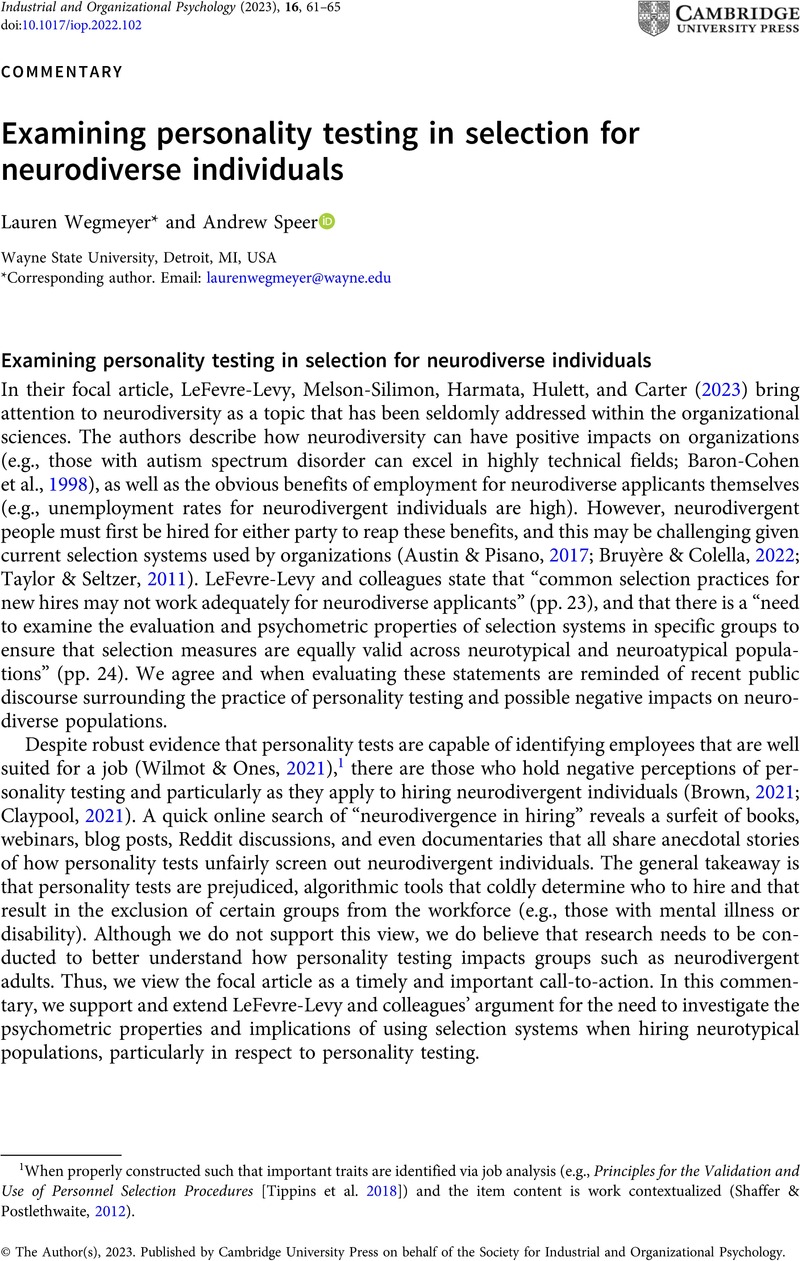Crossref Citations
This article has been cited by the following publications. This list is generated based on data provided by Crossref.
Erbil, Cihat
Özbilgin, Mustafa F.
and
Gündoğdu, Nur
2025.
Neuronormativity as ignorant design in human resource management: The case of an unsupportive national context.
Human Resource Management Journal,
Vol. 35,
Issue. 2,
p.
454.



